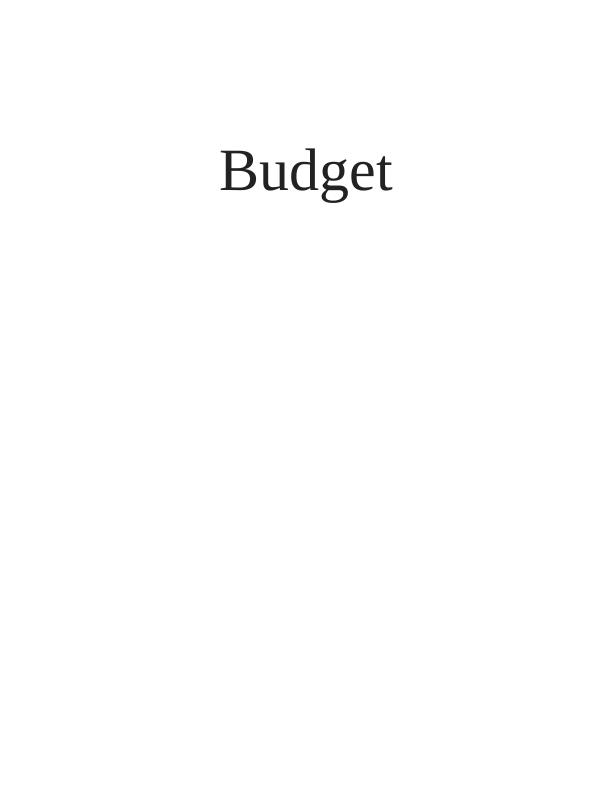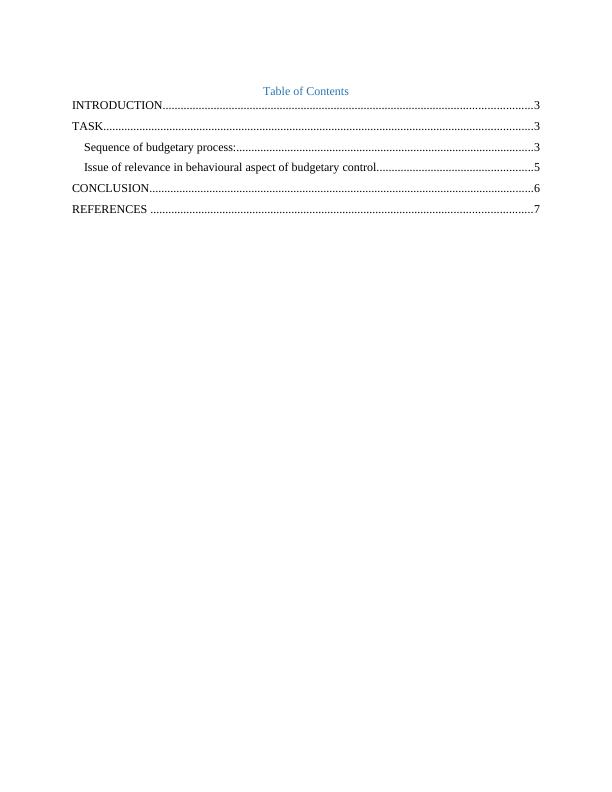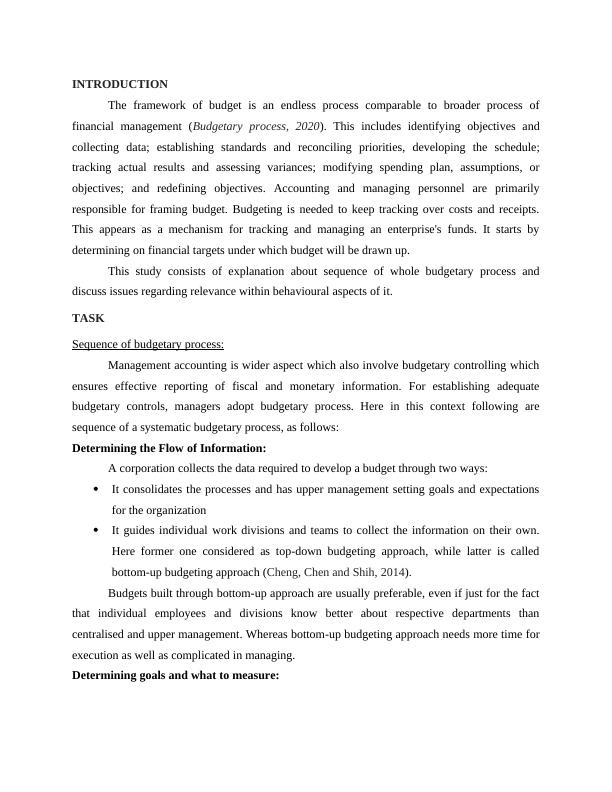Budgetary Process: Sequence and Relevance in Behavioral Aspect
Added on 2023-01-13
7 Pages1780 Words48 Views
End of preview
Want to access all the pages? Upload your documents or become a member.
Importance of Budgeting in Organizations
|8
|1797
|99
Human Factors in Budgeting
|10
|2907
|230
Behavioural Aspects of Budgeting and Sequence of the Budgetary Process
|7
|1860
|87
Purpose of Budget and Its Relevancy of Traditional Budgetary System : Essay
|12
|4021
|149
Management Accounting - Monthly Control Summary and Productivity Evaluation
|12
|3297
|443
Budget Management
|17
|3930
|69



